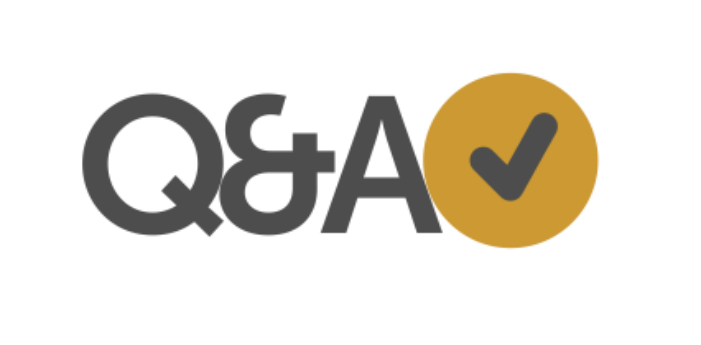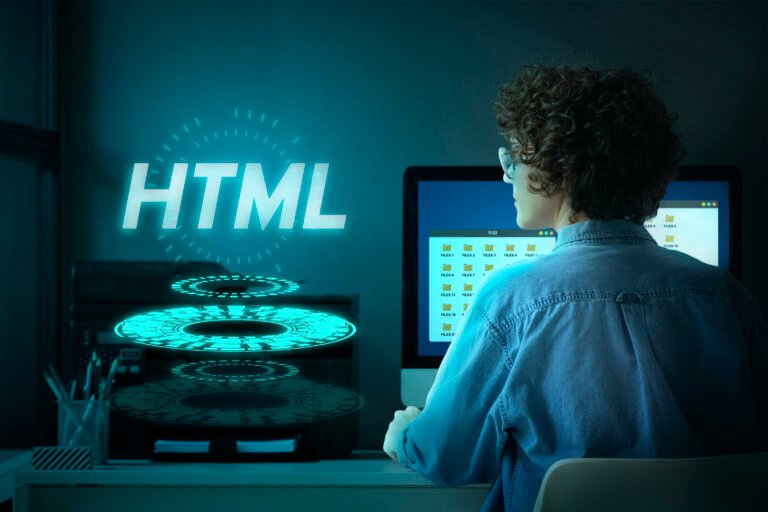Preparing for a frontend interview can be a daunting task, as there are numerous topics and concepts to cover.
To help you in your preparation, we have compiled a list of 20 frequently asked frontend interview questions.
These questions cover a range of topics, from HTML and CSS to JavaScript and frameworks. By familiarizing yourself with these questions and their answers, you can feel more confident and prepared for your front-end interview.
Table of contents
- 20 Frequently Asked Frontend Interview Questions
- 1. What is the box model in CSS?
- 2. Explain the difference between inline and block elements.
- 3. What is responsive web design?
- 4. What is the purpose of CSS preprocessors?
- 5. What is the difference between null and undefined in JavaScript?
- 6. What are closures in JavaScript?
- 7. What is the Document Object Model (DOM)?
- 8. Explain the concept of event delegation.
- 9. What is the difference between local storage and session storage?
- 10. What is the purpose of a CSS preloader?
- 11. Explain the concept of progressive enhancement.
- 12. What are the advantages of using a CSS framework?
- 13. What is the difference between a class and an ID in CSS?
- 14. What is the purpose of media queries in CSS?
- 15. Explain the concept of lazy loading.
- 16. What is the purpose of a JavaScript module bundler?
- 17. Explain the concept of AJAX.
- 18. What are some common performance optimization techniques for front-end development?
- 19. What is the purpose of a CSS preprocessor?
- 20. Explain the concept of single-page applications (SPAs).
- Conclusion
- References
- Recommendations
20 Frequently Asked Frontend Interview Questions
1. What is the box model in CSS?
The box model is a fundamental concept in CSS that describes how elements are rendered on a webpage. It consists of four components: margin, border, padding, and content. Understanding the box model is crucial for creating well-designed layouts and managing spacing and sizing of elements.
2. Explain the difference between inline and block elements.
Inline elements are displayed inline with the text and do not start on a new line. Block elements, on the other hand, start on a new line and take up the full width available. Understanding the difference between these two types of elements is essential for proper layout and positioning of elements on a webpage.
3. What is responsive web design?
Responsive web design is an approach to web design that aims to create websites that adapt to different screen sizes and devices. It involves using CSS media queries and flexible layouts to ensure that the website looks and functions well on various devices, such as desktops, tablets, and smartphones.
Read Also: Top 30 Frequently Asked Interview Questions And Answers For Freshers
4. What is the purpose of CSS preprocessors?
CSS preprocessors, such as Sass and Less, extend the capabilities of CSS by adding features like variables, nesting, and functions. They make CSS code more modular, maintainable, and reusable, allowing developers to write cleaner and more efficient stylesheets.
5. What is the difference between null and undefined in JavaScript?
In JavaScript, null is a value that represents the intentional absence of any object value, while undefined is a value that is assigned to variables that have been declared but have not been assigned a value. Understanding the difference between these two values is important for avoiding unexpected behaviour in JavaScript code.
6. What are closures in JavaScript?
Closures are a powerful feature in JavaScript that allows functions to retain access to variables from their parent scope, even after the parent function has finished executing. They are commonly used to create private variables and encapsulate functionality.
7. What is the Document Object Model (DOM)?
The Document Object Model (DOM) is a programming interface for HTML and XML documents. It represents the structure of a webpage as a tree-like structure, where each node represents an element, attribute, or piece of text. The DOM allows developers to manipulate the content and structure of a webpage using JavaScript.
8. Explain the concept of event delegation.
Event delegation is a technique in JavaScript where, instead of attaching an event listener to each element, you attach a single event listener to a parent element. This allows you to handle events on multiple elements with a single event handler, improving performance and reducing code complexity.
Read Also: 10 Frequently Asked School Prefect Interview Questions And Answers
9. What is the difference between local storage and session storage?
Local storage and session storage are two web storage options available in modern browsers. Local storage stores data with no expiration date, while session storage stores data for the duration of the user’s session. Understanding the differences between these two options is important when deciding which one to use for storing data in a web application.
10. What is the purpose of a CSS preloader?
A CSS preloader is used to display a loading animation or message while the webpage is still loading. It provides feedback to the user and improves the user experience by indicating that the webpage is still loading and not frozen.
11. Explain the concept of progressive enhancement.
Progressive enhancement is an approach to web development that focuses on building a basic version of a webpage that works on all devices and browsers, and then adding more advanced features and enhancements for devices and browsers that support them. This approach ensures that the webpage is accessible to all users, regardless of their device or browser capabilities.
12. What are the advantages of using a CSS framework?
A CSS framework provides a set of pre-written CSS styles and components that can be used to build websites quickly and efficiently.
It saves time by eliminating the need to write repetitive CSS code and ensures consistency in design across different parts of a website.
13. What is the difference between a class and an ID in CSS?
In CSS, a class is a selector that can be applied to multiple elements, while an ID is a selector that can only be applied to a single element. Understanding the difference between these two selectors is important for properly targeting and styling elements in CSS.
Read Also: 20 Frequently Asked Inventory Officer Interview Questions
14. What is the purpose of media queries in CSS?
Media queries allow developers to apply different styles to a webpage based on the characteristics of the device or browser being used. They are commonly used in responsive web design to create layouts that adapt to different screen sizes and devices.
15. Explain the concept of lazy loading.
Lazy loading is a technique used to defer the loading of non-critical resources, such as images or videos until they are needed. This can improve the performance of a webpage by reducing the initial load time and only loading resources as the user scrolls or interacts with the page.
16. What is the purpose of a JavaScript module bundler?
A JavaScript module bundler, such as webpack or Rollup, is used to bundle multiple JavaScript modules into a single file that can be included in a webpage. It improves performance by reducing the number of HTTP requests required to load a webpage and allows developers to use modern JavaScript features, such as import and export statements.
17. Explain the concept of AJAX.
AJAX (Asynchronous JavaScript and XML) is a technique used to send and receive data from a server without refreshing the entire webpage. It allows developers to create more interactive and responsive web applications by updating specific parts of a webpage without requiring a full page reload.
18. What are some common performance optimization techniques for front-end development?
Some common performance optimization techniques for frontend development include minimizing HTTP requests, using browser caching, compressing and minifying files, optimizing images, and reducing the size of JavaScript and CSS files. These techniques can help improve the loading speed and overall performance of a website.
19. What is the purpose of a CSS preprocessor?
A CSS preprocessor is a tool that extends the capabilities of CSS by adding features like variables, nesting, and functions. It allows developers to write more modular and maintainable CSS code, making it easier to manage and update stylesheets.
20. Explain the concept of single-page applications (SPAs).
A single-page application (SPA) is a web application that loads a single HTML page and dynamically updates the content as the user interacts with the page. SPAs provide a more fluid and responsive user experience by reducing the need for full-page reloads and enabling smooth transitions between different sections of the application.
Read Also: 20 Frequently Asked Driver Interview Questions in Nigeria
Tips for Passing Frontend Interview Questions
When it comes to landing a job as a frontend developer, the interview process can be challenging. Employers often use interviews to assess a candidate’s technical skills, problem-solving abilities, and overall fit for the role. To help you prepare and increase your chances of success, here are some valuable tips for passing frontend interview questions.
1. Review the Fundamentals
Before diving into specific interview questions, it’s crucial to review the fundamentals of front-end development. Make sure you have a solid understanding of HTML, CSS, and JavaScript, as these are the building blocks of any front-end role. Brush up on topics such as semantic HTML, CSS layout techniques, and JavaScript concepts like closures and prototypes.
2. Practice Coding Challenges
Many frontend interviews include coding challenges to assess your problem-solving and coding skills. Take the time to practice coding challenges on platforms like LeetCode or HackerRank. Familiarize yourself with common algorithms and data structures and practice implementing them in JavaScript. This will help you improve your coding speed and accuracy.
3. Build a Portfolio
Showcasing your work is essential for frontend developers. Create a portfolio website where you can display your projects and demonstrate your skills. Make sure your portfolio includes a variety of projects that highlight your ability to solve different frontend challenges. Be prepared to discuss the technical details and decisions you made during each project.
4. Stay Updated with Industry Trends
Frontend development is a rapidly evolving field. Stay updated with the latest industry trends, frameworks, and tools. Research popular frontend frameworks like React, Angular, or Vue.js, and be prepared to discuss their pros and cons. Employers often look for candidates who are adaptable and willing to learn new technologies.
Read Also: 20 Frequently Asked Zenith Bank Interview Questions
5. Prepare for Behavioral Questions
Frontend interviews often include behavioural questions to assess your communication skills, teamwork abilities, and problem-solving approach. Practice answering questions about your past experiences, challenges you’ve faced, and how you handled them. Be prepared to provide specific examples that demonstrate your skills and qualities.
6. Ask Questions
At the end of the interview, the interviewer will typically ask if you have any questions. Take this opportunity to ask thoughtful questions about the company, team, or projects you may be working on. This shows your genuine interest in the role and can help you evaluate if the company is the right fit for you.
7. Stay Calm and Confident
During the interview, it’s essential to stay calm and confident. Take a deep breath before answering each question and take your time to think through your responses. Remember that the interviewer is not only evaluating your technical skills but also assessing your ability to handle pressure and communicate effectively.
Conclusion
Preparing for a frontend interview can be challenging, but by familiarizing yourself with common interview questions and their answers, you can feel more confident and prepared. The 20 questions discussed in this article cover a range of frontend topics and concepts, providing you with a solid foundation for your interview preparation. Remember to practice answering these questions and understand the underlying concepts to demonstrate your knowledge and skills effectively during the interview.





